All that’s fit to print
When Ambassador Constance See of Singapore first arrived in May 2023, seeking out the Philippine art scene formed part of her agenda. While this was her first posting to the Philippines, as an avowed art lover, she was no stranger to Philippine art. Her home country houses arguably the most important repositories of Southeast Asian art. Singaporean institutions like the Singapore Art Museum, the Asian Civilizations Museum and the National Gallery Singapore have solidified their reputations as the bastions of art in the ASEAN region, acquiring and collecting the best art from our part of the world, including several masterpieces of modern and contemporary Philippine visual art.
Ambassador See has even done her share in preserving one of the most beloved examples of Filipino art. As the director general in charge of Southeast Asia at the Singapore Foreign Ministry in 2018 and 2019, she fought for the refurbishment and repair of the Alkaff Art Bridge on Robertson Quay. This landmark structure, painted in 2004 with vibrant multicolored circles, is the final major work of Filipina artist Pacita Abad, who lived in Singapore and worked on this project while undergoing cancer treatment.

It is no wonder, then, that to celebrate the important milestone of 55 years of diplomatic ties between the Philippines and Singapore, Ambassador See opted to commemorate the occasion through something special. “Chances of Contact: Contemporary Prints from the Philippines and Singapore” currently runs at The M, the Metropolitan Museum of Manila. Organized by the Singapore Tyler Print Institute or STPI, the show brings together 16 artists—eight Filipinos and eight Singaporeans—in a unique showcase that highlights the possibilities of print as a medium for contemporary art.

STPI, as a workshop and gallery of contemporary printmaking, is the only one of its kind in the world. In 2002, the Singapore government acquired the equipment of American master printer Ken Tyler for US$10 million, including a substantial collection of artwork. Under the leadership of director Emi Eu, the institute continues to push the boundaries of printmaking, particularly by inviting artists to undertake residencies and interact with the team at STPI.
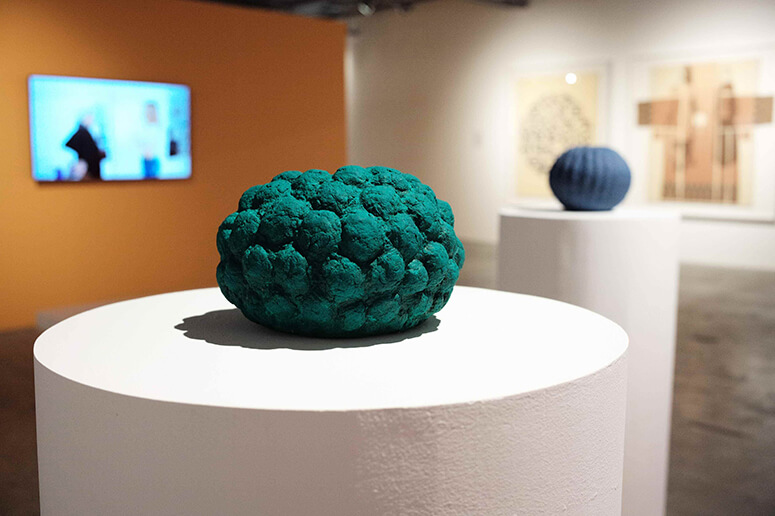
“I wanted to celebrate this milestone through an exhibit with STPI,” says Ambassador See, “because it’s a leading institution of the arts in Singapore and fosters global collaborations through artist residencies. The eight Filipino artists all spent time in Singapore so there’s a great connection there. And I wanted to bring these two together.”

The participating artists from the Philippines are Pacita Abad, Alfredo & Isabel Aquilizan, Anita Magsaysay-Ho, Benedicto “Bencab” Cabrera, Geraldine Javier, Lyra Garcellano, Manuel Ocampo and Ronald Ventura; while Amanda Heng, Charles Lim Yi Yong, Chua Ek Kay, Genevieve Chua, Goh Beng Kwan, Han Sai Por, Heman Chong and Yanyun Cheng make up the Singapore contingent.
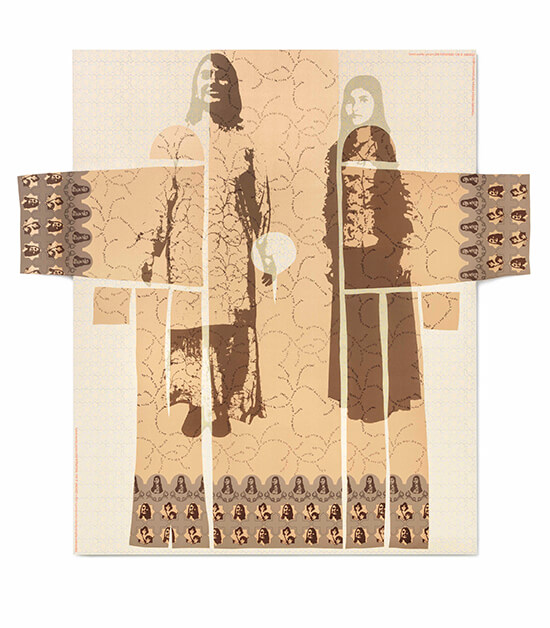
The exhibition is curated by one of the most respected names in the region, Patrick Flores. Dr. Flores is a professor of Art Studies at the University of the Philippines while concurrently deputy director at the National Gallery Singapore. He explains: “The exhibit begins with ‘Between Generations,’ the section that includes the artists BenCab, Anita Magsaysay-Ho and Goh Beng Kwan, who index the modern period, set against Ronald Ventura, Lyra Garcellano and Genevieve Chua representing the contemporary.”
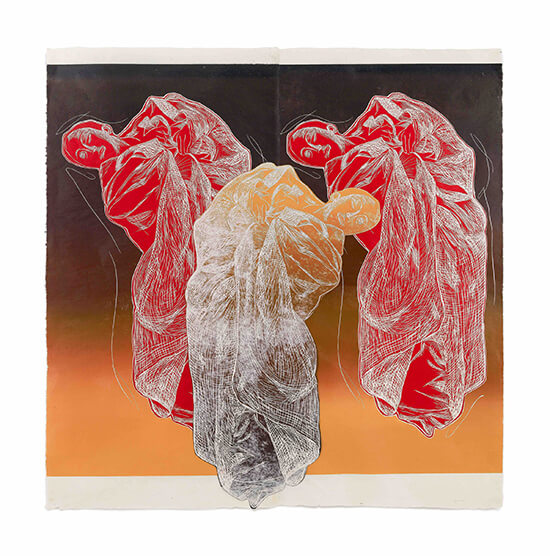
This offers a foretaste of the breadth of print options: from the traditional via Anita Magsaysay-Ho’s sketches rendered as prints, to BenCab’s familiar figures given fresh textures and unexpected colorways through the use of aquatint on STPI’s handmade paper. It continues with Ronald Ventura’s whimsical creature collages, Lyra Garcellano’s haunting shadow portraits, and Genevieve Chua’s hefty blocks of cement-covered boards. The viewer is prepped for the unexpected.
The next section, “Across Mediums,” demonstrates the full panoply of possibilities, an amazing array of what constitutes a print, and what can be achieved by the combined forces of the artist’s vision, STPI’s equipment, and a highly-trained team.
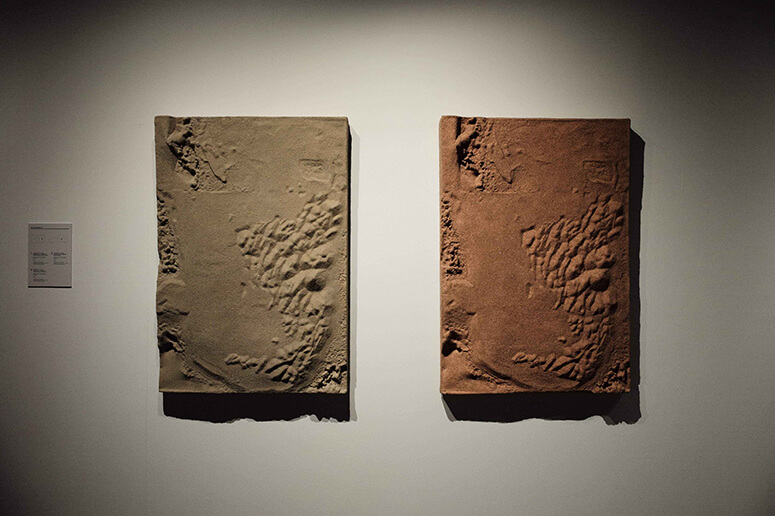
Geraldine Javier’s pieces, completed during her residency in 2014, include “Untitled B,” a 13-page book, its leaves bound by tatting. The pages reveal exquisite collages of pressed leaves, feathers and embroidery, all on either woodcut prints or screenprints impressed on handmade paper. Sand on handmade paper, on the other hand, provides varied textures to Charles Lim Yi Yong’s “SEASTATE” series, while barely discernible embossed flora imbue Heman Chong’s “Bookmark” series with delicacy.

The most compelling work, though, belongs to Manuel Ocampo: the 30-foot long “If All You Are Is A Nail Then Everything Else Looks Like a Hammer Version 2” from his 2019 residency. “I think,” relates STPI director Emi Eu, “ this piece marks the first time ever we actually printed on canvas and of this scale. This is really significant work that we did with a living artist.”

Those familiar with Ocampo’s practice will recognize the humorous take on Spanish Catholic iconography that he frequently employs. They appear printed directly on the length of brown canvas that grounds the work, or replicated on framed paper layered onto the cloth. The stunning piece dominates one wall of the exhibition, allowing visitors to closely examine its details.
The final section, “Towards Future Forms,” to quote Dr. Flores directly from his catalogue essay, “tries to foresee works that have yet to settle into definitions...”

This portion of the exhibit conveys the unlimited potential of print as an art form. Prints can encompass three-dimensional sculptural forms from paper pulp, such as Han Sai Por’s two fruits or Alfredo and Isabel Aquilizan’s axe and chainsaw suspended high on the museum wall. Amanda Heng’s wall-bound diptych delves into the history and memory of her subjects, rendered as figures on one panel paired with a printed QR code on another. The QR code can activate a video.
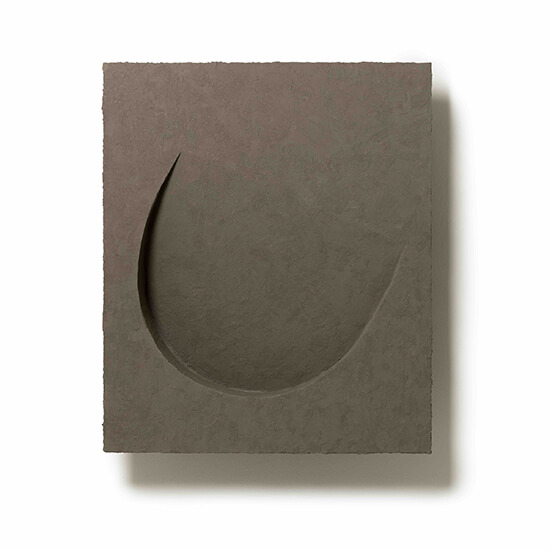
Remarkably, Pacita Abad’s work falls under this section even though she completed them in 2003 as the institute’s first resident. This underscores how groundbreaking she has always been. “Pacita had so many ideas daily,” remembers STPI director Eu. “I think she produced an endless amount of work. If she was given more time, she would never finish. She just developed this affinity to work with paper. So we were able to give her a new way to look at paper. Her work is so amazing!”
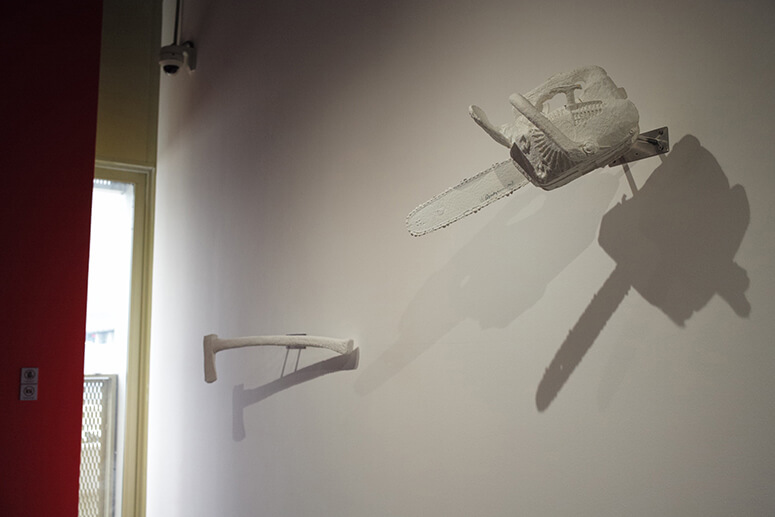
Eu explains that artists invited to do residencies at STPI have three weeks to spend time with the workshop team to develop a whole new body of work. They come back for a second time in the following 12 to 15 months to filter and focus on the production and development of their concepts. Within 18 months from when they first arrived, they should have a full body of work that culminates in an exhibition.
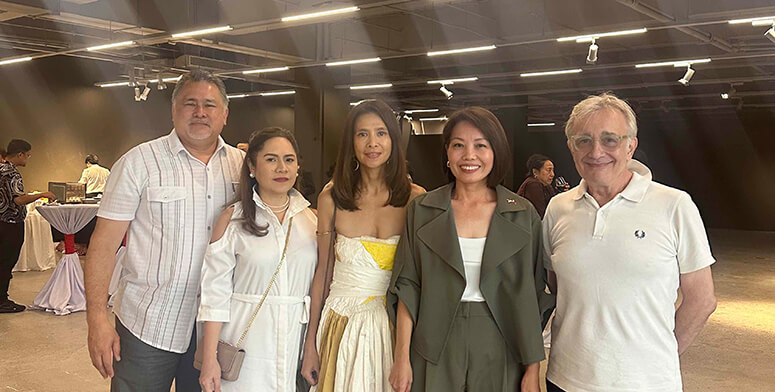
“We provide everything for the artists. In return, they give us time, their creativity, and work with our team of printers and papermakers. I think people think that STPI, because of the print element, we’re just a print institute. But when you see the works that have been produced here, yes, we use print techniques as tools. But it goes beyond, depending on both the artist and our team. It’s a collaborative effort to create something that the artists cannot think of in an artist’s studio.”
The experience is transformative for the artists involved. Geraldine Javier still retains vivid memories of her residency 10 years ago. “When you think of STPI, you think of prints. And I’m not an illustrator. So I thought that was a challenge. But when I saw the equipment, wow. Really, wow! From paper production to sculptural forms, so impressive. Paper isn’t my normal medium. But with the help of the technical team, I found that I could translate my ideas in ways I would not have imagined.”
“Kudos to all the artists,” acknowledges director Eu. “It’s their work. What we do is we try to support them to realize things that can be done in our workshop.”
It is no wonder, then, that to celebrate the important milestone of 55 years of diplomatic ties between the Philippines and Singapore, Ambassador See opted to commemorate the occasion through something special.
***



